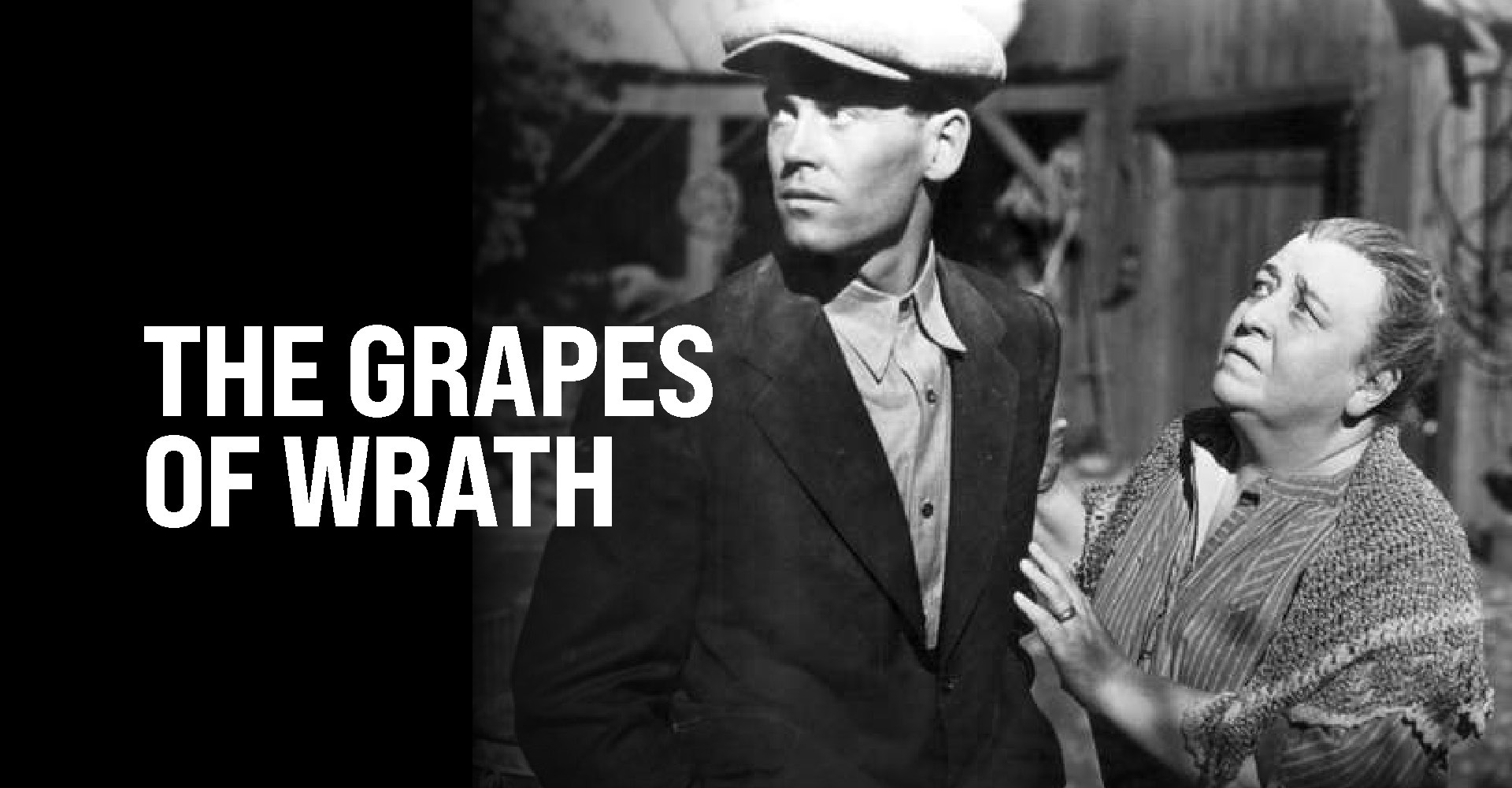
The Grapes of Wrath is a timeless and iconic movie that has captivated audiences since its release. Based on John Steinbeck’s Pulitzer Prize-winning novel of the same name, this powerful film adaptation portrays the struggles of the Joad family during the Great Depression era. With its compelling storyline, exceptional performances, and powerful social commentary, The Grapes of Wrath has cemented its place as one of the greatest movies of all time. In this article, we will delve into 40 fascinating facts about this classic film, shedding light on its production, impact, and behind-the-scenes details that will deepen your appreciation for this cinematic masterpiece. So, grab some popcorn and join us as we unravel the intriguing world of The Grapes of Wrath.
Key Takeaways:
- The Grapes of Wrath” is a classic American film that tells the story of the Joad family’s struggles during the Great Depression, showcasing resilience and the power of hope in challenging times.
- The movie’s release sparked important conversations about social justice, workers’ rights, and economic inequality, leaving a lasting impact on audiences and inspiring generations of artists and activists.
The Grapes of Wrath was released in 1940 as an American drama film.
The movie is based on John Steinbeck’s Pulitzer Prize-winning novel of the same name.
It was directed by John Ford, who won the Academy Award for Best Director for the film.
John Ford’s vision brought the novel’s powerful story to life on the big screen.
The film follows the Joad family as they leave their Oklahoma farm during the Great Depression and travel to California in search of work.
The Joads’ journey reflects the hardships faced by many families during the era.
Henry Fonda portrays the main character, Tom Joad, in a memorable performance.
Fonda’s portrayal of Tom Joad remains one of his most iconic roles.
The film received critical acclaim and was nominated for seven Academy Awards.
The Grapes of Wrath went on to win two Oscars for Best Director and Best Supporting Actress.
John Carradine, who plays the character Casy in the film, delivers a powerful and memorable performance.
Carradine’s nuanced portrayal adds depth to the story’s exploration of social issues.
The movie’s cinematography captures the stark reality of the Great Depression and the beauty of the American landscape.
The visuals in The Grapes of Wrath add another layer of storytelling to the film.
The film’s score, composed by Alfred Newman, complements the emotional depth of the story.
The music enhances the viewer’s engagement with the characters and their experiences.
The Grapes of Wrath remains a significant film in American cinema history.
Its portrayal of the struggles faced by ordinary people resonates with audiences to this day.
The movie’s release sparked controversy for its critique of capitalism and portrayal of migrant workers.
The Grapes of Wrath challenged societal norms and sparked important conversations about social justice.
The film’s title is taken from a line in the novel’s epigraph, which reads: “In the souls of the people, the grapes of wrath are filling and growing heavy, growing heavy for the vintage.”
This powerful quote encapsulates the themes explored in the story.
The Grapes of Wrath was selected for preservation in the United States National Film Registry in 1989.
This recognition solidifies its status as a culturally significant film.
The movie’s screenplay was written by Nunnally Johnson, who helped adapt Steinbeck’s novel for the screen.
Johnson’s screenplay successfully captures the essence of the original story.
The Grapes of Wrath had a profound impact on audiences upon its release.
Its portrayal of human resilience in the face of adversity struck a chord with viewers around the world.
The film’s production design accurately depicts the settings and conditions faced by the characters.
Attention to detail in the film’s sets helps transport the audience to the time and place of the story.
The Grapes of Wrath was filmed in various locations in California, Oklahoma, and Arizona.
The decision to shoot on location adds authenticity to the film.
The movie’s release coincided with the onset of World War II.
Its themes of resilience and unity resonated with audiences during a tumultuous time in history.
The Grapes of Wrath was a financial success, grossing over $2 million at the box office.
Its popularity was a testament to the film’s compelling storytelling.
The film’s realistic portrayal of poverty and homelessness prompted discussions about social reform.
The Grapes of Wrath helped shed light on the plight of the less fortunate in society.
The movie’s release faced resistance from some groups who deemed it politically controversial.
The controversy only served to increase public interest and curiosity surrounding the film.
John Steinbeck, the author of the original novel, heavily praised the film adaptation.
Steinbeck commended Ford’s direction and the performances of the cast.
The Grapes of Wrath is considered one of the greatest films of all time.
Its enduring legacy is a testament to its artistic and narrative achievements.
The film’s themes of social justice and human dignity still resonate today.
The Grapes of Wrath continues to be studied and analyzed in academic settings.
The American Film Institute named The Grapes of Wrath as one of the 100 greatest American films of all time.
This recognition solidifies its impact on American cinema.
The film’s release led to increased awareness and discussions about workers’ rights and labor conditions.
It sparked important conversations about economic inequality.
The Grapes of Wrath features a compelling ensemble cast that brings the characters to life.
The performances of the supporting actors enhance the overall storytelling.
The film’s narrative showcases the resilience and strength of the human spirit.
It serves as a reminder of the power of hope in challenging times.
The Grapes of Wrath highlights the importance of family bonds and solidarity.
It explores the sacrifices one makes to protect and support their loved ones.
The film’s release coincided with the rise of the labor movement in the United States.
Its portrayal of workers’ struggles resonated with the growing sentiment for change.
The Grapes of Wrath is renowned for its iconic imagery and powerful scenes.
The movie’s visuals continue to leave a lasting impact on viewers.
The film’s release was met with both praise and criticism from various political and social groups.
It sparked passionate debates about the role of art in society.
The Grapes of Wrath’s success helped elevate the careers of many involved in its production.
It solidified Henry Fonda’s status as a leading actor and John Ford’s reputation as a master filmmaker.
The film’s portrayal of the Dust Bowl era remains one of its most memorable aspects.
It captures the desperation and hardships faced by those affected by the ecological disaster.
The Grapes of Wrath’s impact extended beyond the world of cinema.
It inspired a generation of artists and activists to fight for social justice.
The movie’s release prompted increased interest in Steinbeck’s works.
His novels gained widespread recognition and continue to be celebrated today.
The Grapes of Wrath is a timeless story that continues to resonate with audiences of all generations.
Its themes of resilience, empathy, and hope are universal.
The film’s message about the inherent dignity of all individuals remains relevant today.
It serves as a reminder to treat others with compassion and respect.
The Grapes of Wrath has influenced countless other films and works of literature.
Its impact on storytelling cannot be overstated.
The film’s release was met with controversy in some areas of the United States.
It faced censorship and boycotts from those who deemed it too politically charged.
The Grapes of Wrath’s enduring popularity speaks to its timeless relevance and powerful storytelling.
It continues to captivate audiences and serve as a reminder of the resilience of the human spirit.
Conclusion
In conclusion, “The Grapes of Wrath” is a timeless classic that continues to captivate audiences with its powerful storytelling and profound themes. This film, directed by John Ford and based on the novel by John Steinbeck, shines a compassionate light on the struggles of the Joad family during the Great Depression. The movie beautifully portrays the concept of resilience and the indomitable spirit of humanity in the face of adversity.With its exceptional performances, impactful cinematography, and thought-provoking narrative, “The Grapes of Wrath” has left an indelible mark on cinema history. Its relevance and message have endured over the years, making it a must-watch for movie lovers and anyone interested in exploring the depths of human resilience.So, grab some popcorn, sit back, and let “The Grapes of Wrath” take you on an emotional and enlightening journey through the hardships and triumphs of the Joads.
FAQs
Q: Is “The Grapes of Wrath” based on a true story?
A: While “The Grapes of Wrath” is a work of fiction, it was inspired by real events and the experiences of people during the Great Depression.
Q: Who wrote the novel “The Grapes of Wrath”?
A: The novel was written by John Steinbeck and was published in 1939.
Q: Who directed the movie adaptation of “The Grapes of Wrath”?
A: The movie was directed by legendary filmmaker John Ford.
Q: When was the movie released?
A: “The Grapes of Wrath” was released in 1940.
Q: Did “The Grapes of Wrath” win any awards?
A: Yes, the film won two Academy Awards for Best Director and Best Supporting Actress.
Q: Can you watch “The Grapes of Wrath” online?
A: Yes, “The Grapes of Wrath” is available for streaming on various platforms or can be rented or purchased from online marketplaces.
Q: Is “The Grapes of Wrath” suitable for all audiences?
A: The film contains some mature themes and depictions of poverty and hardship, so parental discretion is advised.
Q: Are there any other notable adaptations of “The Grapes of Wrath”?
A: Apart from the 1940 movie, there have been other adaptations, including a stage play and a made-for-television movie.
Exploring "The Grapes of Wrath" offers insight into one of America's most challenging eras. For more context, dive into the Great Depression and its impact on millions. Learn how environmental devastation, like the Dust Bowl, compounded economic hardships. Broaden your literary horizons with fascinating facts about American literature icon Alice Walker. Each topic illuminates a facet of this pivotal period, enriching your understanding of the film's enduring message.
Was this page helpful?
Our commitment to delivering trustworthy and engaging content is at the heart of what we do. Each fact on our site is contributed by real users like you, bringing a wealth of diverse insights and information. To ensure the highest standards of accuracy and reliability, our dedicated editors meticulously review each submission. This process guarantees that the facts we share are not only fascinating but also credible. Trust in our commitment to quality and authenticity as you explore and learn with us.


